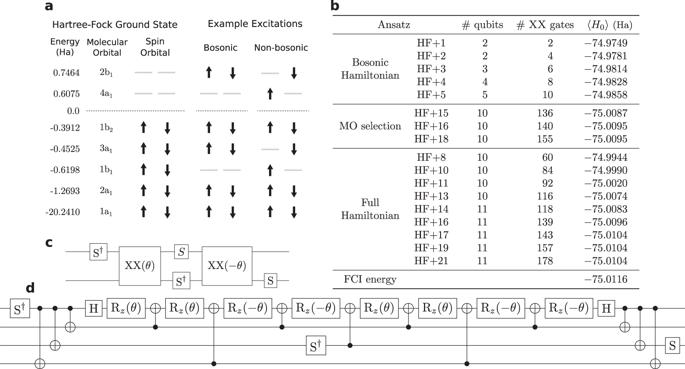npj Quantum Information ( IF 6.6 ) Pub Date : 2020-04-03 , DOI: 10.1038/s41534-020-0259-3 Yunseong Nam , Jwo-Sy Chen , Neal C. Pisenti , Kenneth Wright , Conor Delaney , Dmitri Maslov , Kenneth R. Brown , Stewart Allen , Jason M. Amini , Joel Apisdorf , Kristin M. Beck , Aleksey Blinov , Vandiver Chaplin , Mika Chmielewski , Coleman Collins , Shantanu Debnath , Kai M. Hudek , Andrew M. Ducore , Matthew Keesan , Sarah M. Kreikemeier , Jonathan Mizrahi , Phil Solomon , Mike Williams , Jaime David Wong-Campos , David Moehring , Christopher Monroe , Jungsang Kim

|
Quantum computing leverages the quantum resources of superposition and entanglement to efficiently solve computational problems considered intractable for classical computers. Examples include calculating molecular and nuclear structure, simulating strongly interacting electron systems, and modeling aspects of material function. While substantial theoretical advances have been made in mapping these problems to quantum algorithms, there remains a large gap between the resource requirements for solving such problems and the capabilities of currently available quantum hardware. Bridging this gap will require a co-design approach, where the expression of algorithms is developed in conjunction with the hardware itself to optimize execution. Here we describe an extensible co-design framework for solving chemistry problems on a trapped-ion quantum computer and apply it to estimating the ground-state energy of the water molecule using the variational quantum eigensolver (VQE) method. The controllability of the trapped-ion quantum computer enables robust energy estimates using the prepared VQE ansatz states. The systematic and statistical errors are comparable to the chemical accuracy, which is the target threshold necessary for predicting the rates of chemical reaction dynamics, without resorting to any error mitigation techniques based on Richardson extrapolation.
中文翻译:

俘获离子量子计算机上水分子的基态能量估计
量子计算利用叠加和纠缠的量子资源来有效解决经典计算机难以解决的计算问题。示例包括计算分子和核结构,模拟强烈相互作用的电子系统以及对材料功能的各个方面进行建模。尽管在将这些问题映射到量子算法方面已取得了实质性的理论进展,但解决这些问题的资源要求与当前可用的量子硬件的功能之间仍然存在很大差距。为了弥合这一差距,将需要一种共同设计的方法,即结合硬件本身开发算法的表达以优化执行。在这里,我们描述了一个可扩展的协同设计框架,用于解决离子阱量子计算机上的化学问题,并将其应用于使用变分量子本征求解器(VQE)方法估算水分子的基态能量。俘获离子量子计算机的可控制性使得可以使用准备好的VQE ansatz态进行可靠的能量估计。系统误差和统计误差可与化学精度相媲美,化学精度是预测化学反应动力学速率所必需的目标阈值,而无需借助基于Richardson外推法的任何误差缓解技术。俘获离子量子计算机的可控制性使得可以使用准备好的VQE ansatz态进行可靠的能量估计。系统误差和统计误差可与化学精度相媲美,化学精度是预测化学反应动力学速率所必需的目标阈值,而无需借助基于Richardson外推法的任何误差缓解技术。俘获离子量子计算机的可控制性使得可以使用准备好的VQE ansatz态进行可靠的能量估计。系统误差和统计误差可与化学精度相媲美,化学精度是预测化学反应动力学速率所必需的目标阈值,而无需借助基于Richardson外推法的任何误差缓解技术。











































 京公网安备 11010802027423号
京公网安备 11010802027423号